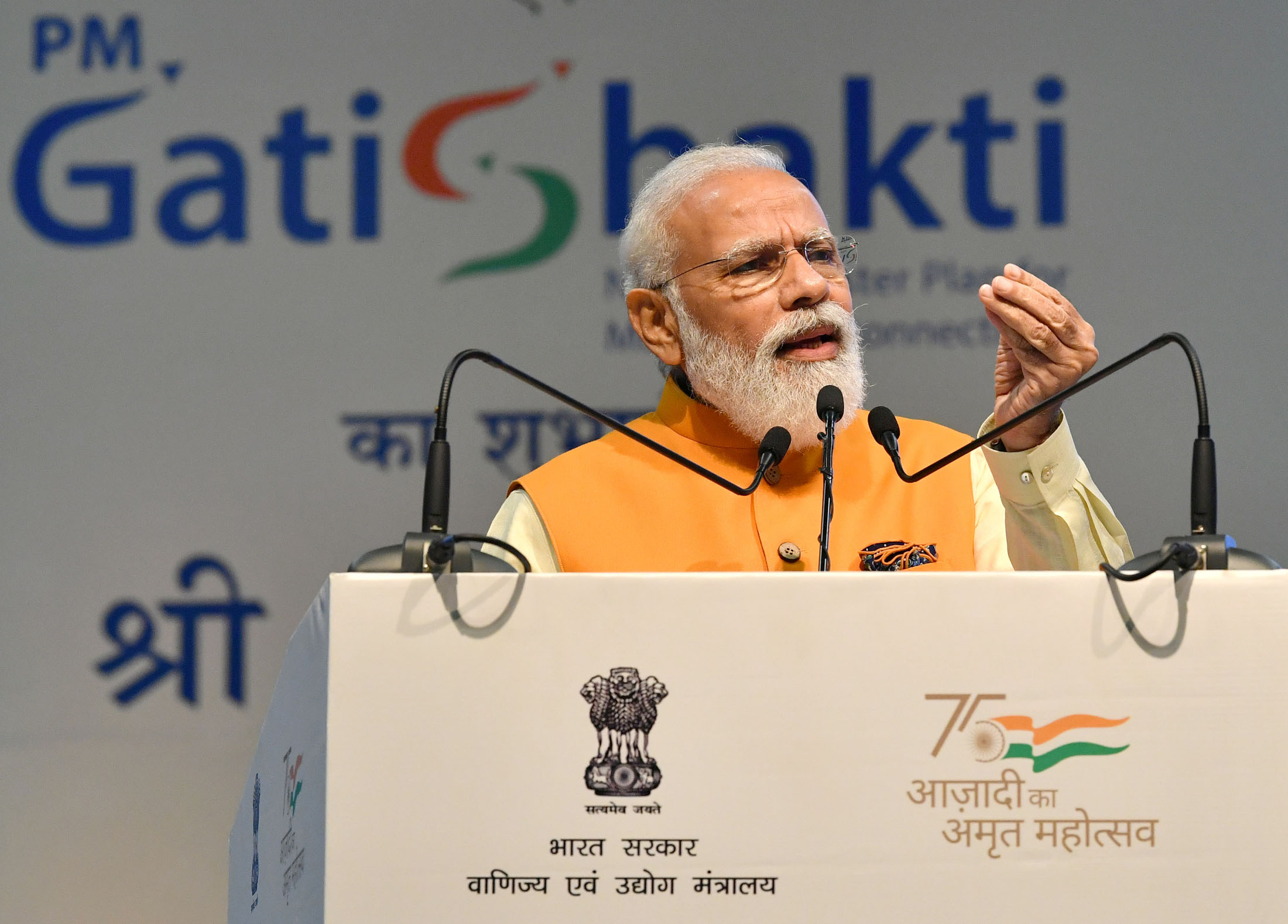Prime Minister’s Gati Shakti ensures that all Ministries, Departments, and State Governments working on infrastructure development do so in a coordinated manner to achieve common goals of providing connectivity and ease of living to the nation’s businesses, farmers, and citizens. Here are eight examples of how they manage to do so.
- Indian citizens are used to the common sight of workers digging up of a recently reconstructed road so that cables or sewerage lines can be put in. With PMGS, coordinated planning for all roads for underground ducts or tunnels will be done in advance. Work on existing roads will also be coordinated to ensure that multiple digging up for different utilities is minimized. This give relief from all the disruption to traffic and inconvenience to citizens. More importantly, citizens would not have to painfully observe their hard-earned tax money being used inefficiently!
- Lack of coordination between state and municipal bodies and national highways often leads to poor planning. This leads to creation of choke points in entry and exit points that lead to cities and towns leading to congestion. Such congestion takes away precious hours of a citizen’s life which could have been used for work or spending time with family. Every working person would know the value of reduction of 30 minutes of commuting time every day! PMGS will ensure better coordination among state and nation authorities, and with the help of advance geospatial modelling create master plans ensure congestion reduction.
- Lack of effective inter-modal coordination leads to costlier transportation of essentials in India. For example, bulk commodities like food-grains should typically move by rail and not roads. While last mile movement from rail facilities to godowns and shops will always be by road, this road leg should be minimized as much as possible. But poor planning and coordination means that adequate infrastructure to move and handle commodities such as food-grains by rail is often found to be missing. With proper coordination and intelligent master planning using geospatial data, PMGS will fill these gaps to ensure that over dependence on road for bulk commodity movement is reduced. These savings will directly impact the cost of good such as food-grains and have a positive impact on the house-holders budget!
- The use of environmentally friendly modes of transport such as inland waterways and coastal shipping remain significantly underused. One is reasons is the lack of adequate last mile road and rail linkages with locations where inland water terminals or smaller ports for coastal shipping that discourages the growth of traffic in these modes. PMGS intends to address these gaps by giving priority to strategic development of inland waterways and coastal shipping. The reduction in pollution due use of these models over road or rail would help improve the quality of life India’s citizens.
- PMGS brings greater focus on the proactive development of Logistics Parks, including Multi-modal Logistics Parks (MMLPs) linked to national highways, major rail arteries and dedicated freight corridors. Such logistics facilities build in scale would bring down the cost of modern logistics services, making them affordable for India’s small businesses and farmers. They will also create millions of good jobs for India’s youth.
- PMGS led transport infrastructure development will help the rapid development of industrial corridors and industrial parks linked to them. Such industrial parks provide so-called ‘plug and play’ facilities-in other words ready to operate factories where the prospective investor needs to simply bring in their machines and workers to start production. Everything else from electricity and sewerage to water supply and waste-water treatment is taken care of. Such development will rejuvenate the manufacturing sector, and reduction of connectivity costs would help make Indian production more competitive in the world market. All of this would help create the millions of jobs India needs to provide sustainable livelihoods to its citizens.
- Comprehensive planning under PMGS, in coordination with state governments will help improve connectivity and transport linkages for thousands of agro-mandis across India’s small town and semi-rural areas. This will allow Indian farmers to reach new markets and get better prices. Over time this will bring transformational change to Indian agriculture and rural economy, helping achieve the goal of doubling farmers income.
- PMGS includes plans to expedite the development of ropeways to the main pilgrimage centres located in the Himalayas and other mountainous location, including Char Dham. Ropeways will also be used to ease traffic in large cities in mountainous areas such as Gangtok and Shillong. Ropeways will reduce travel time by cutting across ranges and valleys, and will bring great relief to religious tourists and citizens in urban centres in hilly areas.
These eight examples represent just a few aspects of how PMGS will help transform India’s economy and radically improve the ease of living for Indian citizens.


